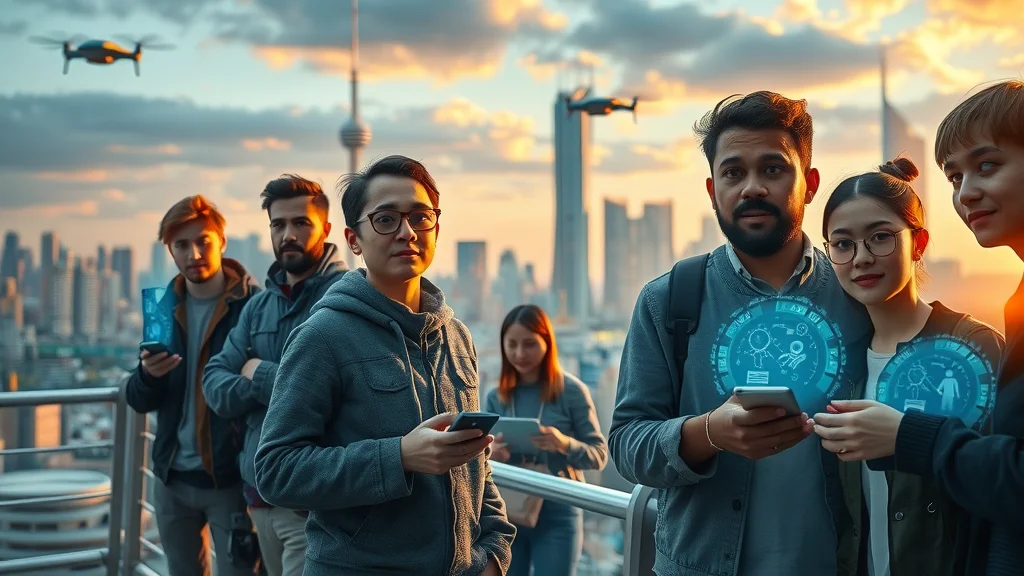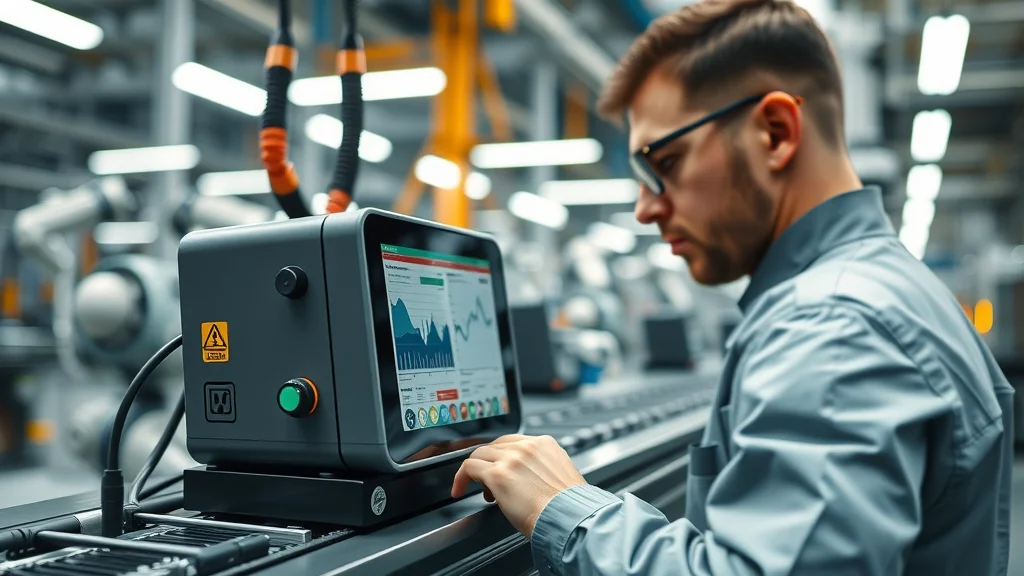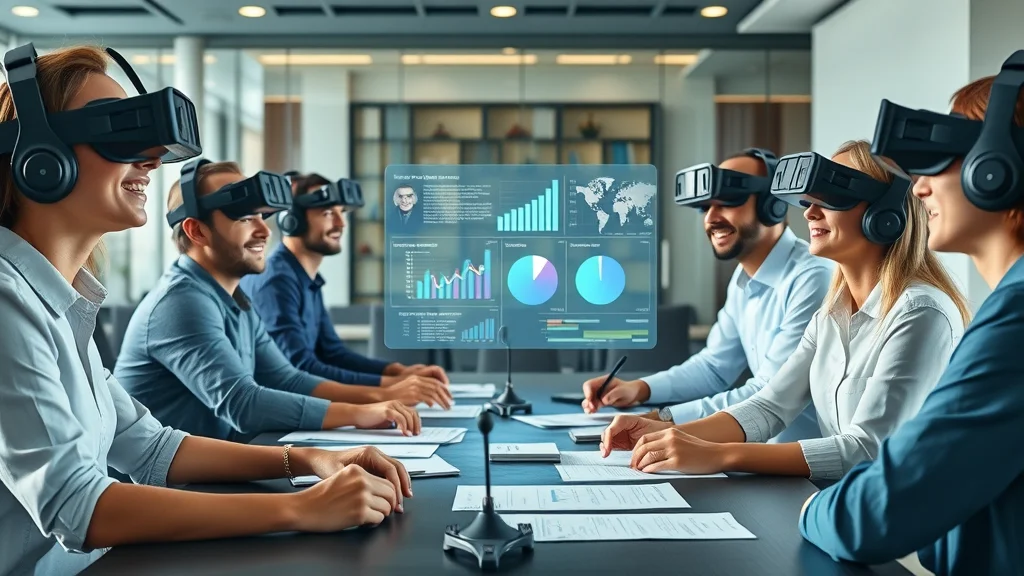Did you know that over 80% of the technologies that will define the next decade are still in nascent stages, yet they are poised to reshape everything we know in under five years? That single fact highlights how emerging technology is gearing up to disrupt the way we live, work, and interact. In this article, we’ll dive into the top breakthrough technology trends that are already changing daily life, explain why these innovations matter, and explore what the next five years of new tech could bring for individuals, families, and businesses alike.
A Startling Look at Emerging Technology and Its World-Changing Impact
The speed at which emerging technology is advancing is truly breathtaking. From the explosion of artificial intelligence to the rise of digital twins and edge computing, the world stands on the cusp of a transformation unlike anything seen in previous generations. What makes this moment so startling is not just the array of technology trends themselves, but the rapid shift from novelty to necessity. As new tech moves from research lab to real life, it’s revolutionizing everything from healthcare and transportation to finance and daily routines.
Over the next five years, we’ll see technologies once considered futuristic become “the new normal.” For example, autonomous vehicles aren’t just concepts for the distant future—they’re being tested on city streets now. Meanwhile, the internet of things and edge computing are making cities smarter and supply chains more efficient. Each step forward brings challenges, but also incredible opportunities for those ready to adapt. Understanding these emerging technologies now will help us all prepare for the sweeping changes ahead.

Did you know that over 80% of the technologies that will define the next decade are still in nascent stages, yet they are poised to reshape everything we know in under five years?
The Speed of Innovation: Understanding Emerging Technologies
Never before have we seen innovation cycles shrink so rapidly. In the past, major new technology trends took decades to reach mainstream adoption, but today’s emerging technologies can go from laboratory to living room in just a few years. This acceleration is driven by advances in AI, connectivity, and the global exchange of ideas. For example, developments in machine learning and artificial intelligence are now powering everything from voice assistants to autonomous vehicles and predictive healthcare. Digital twin technology is another prime example, with industries using virtual replicas to optimise performance and reduce downtime.
The implications for society and business are massive. Not only can emerging technology dramatically improve efficiency, but it also opens up a wide range of new applications and use cases that were unimaginable just a short while ago. This makes it essential to keep a careful watch on the latest technology trends, as even incremental advancements today can trigger a cascade of change tomorrow. Industries, governments, and individuals who actively adapt to these changes are likely to thrive, while others risk falling behind. It’s a thrilling—and sometimes unsettling—time to be alive.
What You'll Learn About Emerging Technology
- Explore the most influential emerging technologies and technology trends.
- Recognise how artificial intelligence, digital twins, edge computing, and autonomous vehicles are transforming industries.
- Identify the new technology that experts predict will achieve mainstream adoption soon.

- Gain insight into the societal, ethical, and economic impacts of these technology trends.
Defining Emerging Technology: The Core Characteristics
What Is Meant by Emerging Technology?
"Emerging technologies are those innovations just beginning to unlock their disruptive potential." – Industry Thought Leader
Emerging technology refers to inventions and innovations that are at the early stages of their lifecycle, but demonstrate the potential to change industries, economies, and society itself. These are the breakthroughs that may start in research labs or as niche products, but rapidly evolve thanks to their novelty and innovation, as well as their potential for disruption. Think of how smartphones transformed communication or how the internet redefined access to information—today’s emerging technologies could have equally wide-ranging impacts.
A few defining criteria set emerging technology apart: novelty, meaning the technology is new or significantly improved; rapid advancement, as seen in areas like AI and edge computing; and a strong likelihood for massive disruption across existing industries. As these innovations mature, they reshape supply chains, workflows, and even our daily routines. Spotting these characteristics helps experts and businesses recognise when a technology trend is poised to go mainstream.
- Novelty and Innovation
- Rapid Advancement and Adoption
- Potential for Disruption
Why Emerging Technologies Matter: Societal and Economic Implications

Driving Change: The Role of New Tech and Technology Trends
The influence of emerging technologies extends far beyond the thrill of new tech—it touches nearly every part of society. The most notable effect is economic acceleration and the evolution of new jobs. As automation, AI, and digital twins become integrated into core business processes, companies must rethink roles, retrain employees, and develop strategies for new opportunities that never existed before. At the same time, governments and industry leaders face ethical dilemmas and regulatory debates, ranging from data privacy to autonomous vehicle safety.
But the impact doesn’t stop at the office or factory. Our daily lives are transforming, shaped by smart home devices, accessible healthcare analytics, and seamless connectivity. The far-reaching societal impact of emerging technology is both a challenge and an opportunity. Those who understand and harness the latest technology trends can not only future-proof their careers and businesses but also ensure that the wave of disruption leads to greater prosperity—not just for a few, but for all.
- Economic acceleration and job evolution
- Ethical challenges and regulatory debates
- Transformation of daily life and industry
Top 10 Emerging Technologies to Watch in the Next 5 Years
| Technology | Key Features | Projected Impact | Adoption Timeline |
|---|---|---|---|
| Artificial Intelligence (AI) | Machine learning, natural language processing, automation | Transforms healthcare, finance, and everyday life | 2-3 years |
| Digital Twins | Virtual replicas of physical systems | Predictive maintenance, optimised supply chains | 2-4 years |
| Edge Computing | Real-time data processing at device level | Reduces latency, boosts IoT and smart devices | 1-3 years |
| Internet of Things (IoT) | Network of interconnected devices | Smart homes, cities, and industrial automation | Current & expanding |
| Autonomous Vehicles | Self-driving cars, drones, delivery robots | Disrupts transport and logistics | 2-5 years |
| Quantum Computing | Superfast, parallel data processing | Revolutionises security and computation | 4-5 years |
| Blockchain | Decentralised record-keeping, smart contracts | Secure digital assets and transactions | 2-4 years |
| Next-gen Batteries | Lithium-sulfur, solid-state technology | Power for EVs, devices, and energy grids | 1-3 years |
| Smart Materials | Self-healing, adaptive, responsive to environment | Enables new product design, medical innovation | 2-5 years |
| Biotech Solutions | Gene editing, bioengineering, agricultural biotech | Personalised medicine, sustainable agriculture | 3-5 years |
Artificial Intelligence (AI): The Powerhouse Emerging Technology

AI as a Driving Force in Technology Trends
"AI is not just another emerging technology; it's the foundation for a new era of possibilities." – Tech Futurist
Artificial intelligence lies at the heart of the most important technology trends today. With the ability to process vast data sets, learn from patterns, and even make predictions through sophisticated machine learning and deep learning algorithms, AI is the true powerhouse of emerging technology. Its practical applications range from smarter, more responsive chatbots to medical diagnostics that can spot disease earlier than any human doctor.
The impact of AI on society and business cannot be underestimated. In healthcare, AI models are used to create treatment plans tailored to each patient. In finance, they're used for fraud detection and high-frequency trading. Autonomous vehicles use AI systems for safe navigation, while AI-powered robotics are revolutionising manufacturing and supply chains. As AI continues its rapid advancement, the next five years will likely see it integrated even more deeply into our everyday reality, unlocking new tech applications and redefining what’s possible.
- AI's role in healthcare, finance, and automotive
- Machine learning and deep learning advancements
Digital Twin and Digital Twins: Blending Virtual with Physical
How Digital Twins are Changing Industry Operations
- Predictive maintenance and simulation
- Key industries adopting digital twin technology

The concept of a digital twin refers to a virtual, real-time replica of a physical object, process, or system. Initially adopted by aerospace and manufacturing, digital twins are now a key technology trend shaping industries as diverse as healthcare, construction, and smart city planning. Their practical applications are many: they allow for predictive maintenance that saves millions by reducing downtime, simulate complex supply chain operations, and enable the rapid testing of new designs or scenarios without risk.
As digital twins become more sophisticated and accessible, more companies are realising their value in everything from monitoring industrial equipment to optimising building performance. The ability to run “what-if” scenarios in a digital space guides decision-making, reduces costs, and boosts agility. In the next few years, expect even greater adoption as new tech makes it easier and cheaper for businesses of all sizes to leverage digital twin technology.
Edge Computing: Real-Time Processing As the Next Tech Revolution
The Importance of Edge Computing in Emerging Technologies
- Reducing latency for instant decisions
- Edge devices and distributed intelligence

As more devices generate more data than ever before, sending all of it to the cloud for processing is neither practical nor efficient. This is where edge computing comes in. By processing information right at the “edge” of the network—on the manufacturing line, in a vehicle, or even inside a wearable device—real-time decisions are possible without high latency. Edge computing represents a pivotal shift in how we manage and use big data, making instant responsiveness for IoT devices, autonomous vehicles, and smart grids a reality.
Edge computing is quickly becoming a must-have for companies needing low-latency data analysis, enhanced privacy, and reliable operation even if networks go down. It’s a technology trend that’s driving innovation in everything from factories using smart sensors for predictive maintenance to smart cities optimising traffic flow. As distributed intelligence becomes the norm, edge computing will unlock a wide range of new applications and keep critical systems running smoothly.
The Internet of Things (IoT): Ubiquitous Connectivity
IoT as a Pillar of New Technology Trends
- Smart cities and connected infrastructure
- IoT devices shaping everyday life

The Internet of Things, or IoT, has quickly evolved from a buzzword to an essential technology trend in homes, cities, and industries. IoT connects everyday objects—refrigerators, thermostats, streetlights, vehicles—into a massive, data-sharing network. This makes everything from automated energy savings in smart homes to real-time fleet tracking in logistics possible. The proliferation of IoT devices is a classic example of how emerging technology becomes woven into the fabric of daily life.
The next five years will see even more IoT integration, driven by both improved connectivity (such as 5G) and edge computing. Expect smart city projects to roll out on a grander scale, healthcare wearables to become more informative, and household conveniences to take another leap forward. The impact on supply chains, resource management, and personal productivity will only continue to grow as the IoT universe expands.
Autonomous Vehicles: Self-Driving Cars and Beyond
The Arrival of Autonomous Vehicle Technology
- Key technology trends in vehicle autonomy
- Impact on transportation and logistics

The concept of autonomous vehicles—from self-driving cars to delivery drones—once belonged to science fiction. Now, it’s a rapidly maturing technology trend poised to upend transportation and logistics. Behind the scenes, advances in AI, sensor technology, and edge computing are pushing the boundaries of what’s possible, enabling vehicles to navigate safely, avoid obstacles, and even communicate with each other and city infrastructure.
The arrival of autonomous vehicles could lead to safer roads, lower emissions, and the reshaping of urban spaces. There are also broad economic implications as these systems impact jobs in driving, logistics, and supply chain management. As regulators grapple with safety and liability concerns, the next few years will determine just how quickly society adopts this revolutionary new technology and what practical applications emerge first.
Quantum Computing: New Tech Poised to Break Boundaries
Why Quantum Computing Is a Game-Changer for Emerging Technology
- Speed, security, and big data processing
- Research and commercial breakthroughs

Quantum computing promises to break through the limitations of classical computers by processing information in fundamentally new ways. Although still in its early stages, quantum computers have already demonstrated the ability to solve certain types of problems exponentially faster than traditional systems. This could transform fields like cryptography, material science, financial modelling, and even drug discovery by allowing researchers to explore scenarios that current computers could never handle.
As investment from both private and public sectors accelerates, commercial breakthroughs are becoming more frequent. Major companies and governments are racing to scale this technology from the lab to practical use. The next five years will likely see the first practical applications of quantum computing, impacting everything from secure communications to next-generation AI models. The implications for emerging technologies and technology trends are enormous.
Blockchain: The New Frontier in Data Security
Emerging Blockchain Technology Trends
- Smart contracts and decentralised finance (DeFi)
- Real-world use cases and challenges
Beyond its well-known role as the backbone for cryptocurrencies, blockchain technology is carving out a much broader future. One of the most promising technology trends is the use of blockchain for smart contracts—self-executing agreements coded into the blockchain. These are making waves in finance (DeFi), supply chain management, and even digital identity verification, delivering trust in sectors where security and transparency are key.
Despite exciting real-world use cases, blockchain technology still faces challenges: high energy use, regulatory debates, scalability limits, and the need for wider industry adoption. Still, as emerging technologies mature, blockchain will continue to expand its role in data security, authentication, and more. Keep an eye out for creative new applications in healthcare, voting, and cross-border finance.
Next-Generation Batteries: Powering the World’s Emerging Technologies
Energy Storage and the Race for Sustainability

- Solid-state and lithium-sulfur innovations
- Impact on EVs, grid storage, and devices
Energy storage may not sound glamorous, but without reliable batteries, most of the exciting new tech on this list wouldn’t be possible. From solid-state designs to lithium-sulfur innovations, next-generation batteries are pushing the limits on how much energy we can store and how quickly we can recharge. These advances are critical for powering the growing fleet of electric vehicles, stabilising renewable energy on power grids, and making wearable tech even more powerful and convenient.
As the demand for clean, sustainable energy rises, battery innovation has become one of the most important technology trends of our time. Companies large and small are racing to make batteries with higher capacity, longer life, and lower costs. In the next five years, improved energy storage could lead to cheaper EVs, more resilient infrastructure, and a significant reduction in global carbon emissions—a true win for technology and the planet.
Smart Materials and Biotech Solutions: Rethinking What’s Possible
Materials Science Meets Life Sciences in Emerging Technology
- Self-healing and adaptive materials
- Biotech applications in health and agriculture
Imagine materials that can heal themselves, adapt to their surroundings, or change shape on command. These “smart materials” are evolving rapidly, finding new applications in everything from building construction to wearable technology and medical implants. By blending insights from materials science and biotechnology, researchers are opening up practical applications that could reshape industries and even redefine what it means to be healthy.
Biotech solutions aren’t just helping us develop new medicines faster; they’re also improving crop yields, reducing pesticide use, and unlocking the next generation of sustainable agriculture. As these innovations take hold, expect smarter products in your home, your car, and even the clothes you wear. The convergence of materials science and biotech is quickly becoming one of the most fascinating technology trends in the world.
Key Technology Trends Shaping the Future

Big Data, Augmented Reality, and Next-Gen Communication
- Data-driven decision-making
- AR/VR in business and entertainment
- 6G and the quest for ultra-connectivity
As we look even further out, several new technology trends are converging to create an even more connected and interactive world. Big data analytics enables better and faster business decision-making. Augmented reality (AR) and virtual reality (VR) are creating immersive environments for learning, entertainment, and remote working, blurring the line between digital and physical worlds. Meanwhile, the race towards 6G networks promises speeds and reliability that could enable use cases and experiences we can barely imagine today.
These advancements, when combined with AI, IoT, and digital twins, create a feedback loop where each technology amplifies the impact of the others. Businesses and individuals that embrace this integrated future will be best positioned to lead—whether by finding new applications for existing tools or creating entirely new tech innovations. The age of isolated inventions has ended; now, it’s all about convergence.
The Intersection of Ethical Challenges and Emerging Technology
Addressing Data Privacy, Bias, and Societal Disruption
As emerging technology becomes more embedded in every facet of life, ethical issues must be addressed head-on. From data privacy concerns in AI and IoT systems to algorithmic bias that could lead to unfair outcomes in finance or hiring, it’s essential for industry leaders and regulators to establish clear guidelines. The technology trend of rapid adoption often outpaces the establishment of ethical frameworks, raising questions about security, transparency, and accountability.
Society must find the balance between harnessing the power of new tech and protecting individuals’ rights. Public debate, regulation, and inclusive research practices will be critical in ensuring that technology serves everyone, not just a select few. Responsibly managed, emerging technologies can usher in prosperity and opportunity—if we remember to keep people at the centre of our innovation efforts.
What Are the 10 Emerging Technologies?
Answer: A Review of Today’s Leading Emerging Technologies
- Artificial Intelligence (AI)
- Digital Twin Technology
- Edge Computing
- Internet of Things (IoT)
- Autonomous Vehicles
- Quantum Computing
- Blockchain
- Next-Generation Batteries
- Smart Materials
- Biotech Solutions
What Is Meant by Emerging Technology?
Answer: Defining Characteristics and Criteria for Emerging Technology
Emerging technology refers to a new or rapidly advancing innovation that is still being developed, but already demonstrates the ability to transform society or industries. Criteria include novelty, rapid pace of improvement, and high potential for disruption or mainstream adoption across multiple sectors.
What Is the Top 10 Technology Today?
Answer: Ranking Today’s Hottest Technology Trends in Emerging Technologies
The top 10 technology trends dominating headlines today include: Artificial Intelligence, Digital Twins, Edge Computing, Internet of Things, Autonomous Vehicles, Quantum Computing, Blockchain, Next-Generation Batteries, Smart Materials, and Biotech Solutions. Each trend is at a different stage of maturity and adoption, but all promise to drive meaningful transformation within five years.
What Are the Five Emerging Technologies?
Answer: The Five Most Impactful Emerging Technologies Right Now
Currently, the most impactful emerging technologies are: Artificial Intelligence, Digital Twins, Edge Computing, Autonomous Vehicles, and the Internet of Things. These areas are driving radical change across industries and influencing the technology landscape more than any other.
Frequently Asked Questions About Emerging Technology
-
What determines if a technology is 'emerging'?
A technology is considered 'emerging' if it is innovative, rapidly evolving, and has the potential to disrupt existing systems or industries, but is not yet fully mainstream. -
How do emerging technologies transition to mainstream adoption?
Emerging technologies move into the mainstream through proven use cases, decreasing costs, industry standards, and broad consumer acceptance. -
What role do governments and industry leaders play?
Governments set regulations and provide funding, while industry leaders develop standards, test practical applications, and drive large-scale deployment. -
How can individuals prepare for rapid tech change?
Staying informed, pursuing lifelong learning, and developing adaptable digital skills are the best ways for individuals to thrive in an era of rapid technology evolution.
Key Takeaways: Preparing for the Wave of Emerging Technology
- Swift adoption of emerging technologies will redefine career paths and skill needs.
- Societal impacts and ethical considerations must evolve with innovation.
- The next five years will be defined by the convergence of multiple powerful technology trends.
We'd love to hear what you think about this? Please add your comments below...
The world of emerging technology isn’t just about gadgets—it’s about preparing for a future being written faster than ever. Share your thoughts!
To deepen your understanding of emerging technologies poised to reshape our world in the next five years, consider exploring the following resources:
-
The article “These are the top 10 emerging technologies of 2025” by the World Economic Forum provides an insightful overview of groundbreaking innovations expected to have significant societal and economic impacts.
-
The National Science Foundation’s “TIP Emerging Technology” page outlines strategic investments and initiatives aimed at accelerating key technologies to practice, fostering economic growth and job creation.
If you’re serious about staying ahead in the rapidly evolving tech landscape, these resources will offer valuable insights into the technologies set to define the near future.
 Add Row
Add Row  Add
Add 










Write A Comment